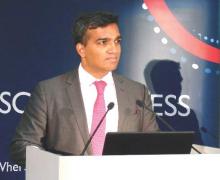“If a patient with AF comes to me and says ‘I don’t want to take the damn anticoagulants, I want a Watchman,’ and if the patient understands the risks and benefits of Watchman, then I’m 100% fine” facilitating placement of the device in such a patient, explained Dr. Kowey, someone who remains very skeptical of Watchman’s current track record and role. “But what should not happen is for physicians to try to sell Watchman to their patients. Physicians should not tell patients that you don’t need to worry about anticoagulation anymore because I can put in a Watchman and it’s the end of the story. We’re very short of having enough information right now to recommend it to patients” this way. Despite this information shortfall, “I know for a fact” that this sort of promotion of Watchman occurs right now from physicians with an economic incentive to place the device into patients, Dr. Kowey said in an interview.
While some physicians may excessively promote Watchman, they also likely have a receptive audience. “I don’t think it will be hard to find patients who are interested in the device. The challenge will be to figure out if a patient is a good candidate,” said Dr. Paul Varosy, director of electrophysiology at the Denver VA Medical Center. “I have patients and physicians who ask all the time when we will start making the device available. I care for many patients who absolutely despise warfarin and NOACs, and they would love to have a way to get off their medication that does not involve having a risk for a massive stroke,” he said. “What is striking to me is how many patients are interested in this device without being aware of what they would be getting.”
Paying for Watchman
Economic incentives for placing Watchman into patients aside, paying for the device right now and for the procedure that’s involved is no easy matter. Several cardiologists active in Watchman programs scattered around the United States report substantial problems encountered since March with health insurance coverage for the device and placement procedure, and they add that uncertainties about coverage or denied coverage has significantly limited the number of patients who have received the device.
One of the more glaring examples is at the Mayo Clinic in Rochester, Minn., the program led by Dr. Holmes, who helped develop the Watchman technology. He and his associates have placed roughly 20 of the devices since March, but in August he said that his program had “about 40-50 patients” who had been fully screened for the device and looked like they were excellent candidates but were refused coverage by their health insurers. And after some of the 20 patients had already received a Watchman at Mayo, their insurers denied payment, cases that now are on appeal, Dr. Holmes said.
Other active programs report similar difficulties. Dr. Reddy said his program had placed Watchman into about 30-35 patients through the end of August, and while “a majority” of his candidate patients received authorization from their health insurers, others have not received authorization and are on appeal. Insurance coverage is “clearly a problem,” he said in an interview.
Dr. Kar said his Cedars-Sinai program in Los Angles has put Watchman into about 55 patients since last March, and the pace recently accelerated with his treating 13 patients during a 2-day period in August, but he has also seen “lots of problems with insurance,” with appeals usually needed on a case-by-case basis. “We’ve had several appropriate patients who have not received the device because they were not covered,” although most of those cases remain on appeal.
At the University of Kansas in Kansas City, “reimbursement issues have been a major hindrance to widespread use of the device,” and has so far limited placement to just a few patients, said Dr. Dhanunjaya R. Lakkireddy, professor of medicine and director of the University’s Center for Excellence in AF and Complex Arrhythmias. At the Intermountain Heart Institute in Salt Lake City, operators have done just 3 placements since the device’s approval, after doing 128 Watchman placements during the trials and continued access programs. One of the patients paid for the device and procedure completely out of pocket, said Dr. Weiss, a bill that Dr. Kar said runs more than $20,000. The second of the Intermountain patients received Medicare coverage, and in the third case “we met with CMS and are waiting to hear,” Dr. Weiss said. “We are being very cautious to do cases that are very well indicated” to help better ensure that they will receive medical insurance coverage, Dr. Weiss said in an interview.



